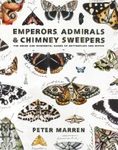![Mermaids Mermaids]()
Click to have a closer look
About this book
Customer reviews
Biography
Related titles
About this book
Mermaids are blessed with one tail or two, as happy in freshwater as salt, and share an ancestry that stretches from the classical past to the present – a line of descent which predates Homer's sirens and will outlive those bloodthirsty nymphs in the Pirates of the Caribbean.
The mermaid expresses our reliance on the sea as a source of food and trade, and speaks about the fear and fascination we have for those unknown depths below the water's surface. A woman to the waist and fish below, this otherworldly creature has inspired numerous artists and spawned countless tales, from Hans Christian Andersen's Little Mermaid to the West African Mami Wata legend. She has been found in Assyrian reliefs, illuminated in Medieval bestiaries, painted onto pub signs and Pre-Raphaelite canvas, inked into skin at tattoo parlours, sketched by Picasso with a Communist hammer and sickle in her hand, cast in Hollywood movies, and graffitied onto city walls. Variously portrayed as sea goddess, victim and vamp, she has been reclaimed in the twenty-first century as a symbol of womanhood and resistance.
Sophia Kingshill has written here the history of a unique family tree, travelling back 3,000 years to discover the enduring myths and the vibrant folklore that continue to enchant us and ensure the mermaid's survival.
Customer Reviews
Biography
Sophia Kingshill is co-author of The Lore of Scotland and The Fabled Coast, an examination of British and Irish sea legends, both written in collaboration with the late Jennifer Westwood. Her interest in folklore began with childhood visits to the home of the great scholar of fairytale and legend Katharine Briggs, where productions were staged based on ballads and folk tales. Her articles, on topics including the sunken galleon of Tobermory and the search for the fabulous island of Hy Brasil, have been published in Marine Quarterly and Folklore. She also writes for the theatre, and her plays on subjects such as the Brontes, William Morris and Sinbad have been performed in Scotland, England and Norway.
















































